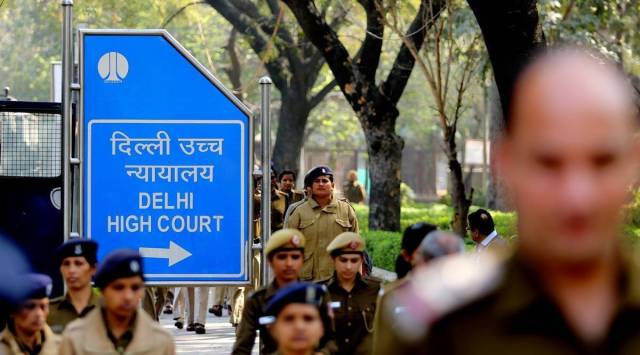Stay updated with the latest - Click here to follow us on Instagram
‘Subway cannot claim monopoly over term Sub used by eateries selling submarine sandwiches’: Delhi HC
The high court upheld Infinity Foods’ (defendant no. 1) contention that ‘SUBWAY’ is so well known that there is hardly any chance that “a person who wishes to partake from a SUBWAY outlet would walk into one of the defendant‘s two outlets and partake from there.”
 Subway had alleged that the defendants infringed its brand name, and logo using an identical yellow and green scheme used by it. (file)
Subway had alleged that the defendants infringed its brand name, and logo using an identical yellow and green scheme used by it. (file) Dismissing Subway’s request for an interim order in a trademark infringement claim against ‘Suberb’, a city-based outlet in Delhi, the Delhi High Court recently held that Suberb and Subway are “not phonetically similar” and the term ‘Sub’ is used widely by eateries for submarine sandwiches.
A single judge bench of Justice C Hari Shankar in its January 12 decision held that “SUBWAY and SUBERB when used in the context of eateries serving submarine sandwiches are not deceptively similar, as ‘SUB’ is publici juris (belonging to the public) and common to the trade, and ‘WAY’ and ‘ERB’ are neither phonetically nor otherwise similar.”
The high court upheld Infinity Foods’ (defendant no. 1) contention that ‘SUBWAY’ is so well known that there is hardly any chance that “a person who wishes to partake from a SUBWAY outlet would walk into one of the defendant‘s two outlets and partake from there.” “A person who wants to have food from a SUBWAY outlet knows where to go; it would be quite unrealistic to visualize him walking, instead, into one of the defendant’s ‘SUBERB’ outlets. It cannot, therefore, be said that the defendant’s ‘SUBERB’ mark infringes either the plaintiff‘s ‘SUBWAY’ word mark or any of the plaintiff’s ‘SUBWAY’ device marks,” Justice Shankar observed.
The Court had on December 21 last year adjourned the matter to allow the defendants – Infinity Foods and others – to examine whether they can carry out modifications which would satisfy Subway that they were no longer infringing its trademarks. On December 22, the defendants sent an email to Subway offering to make certain changes in their logo, and the colour combination used in signage outside their restaurants. The defendants said that they will not use the yellow and green colours used in Subway signage or the ‘S’ logo and they will also pull down the websites which have copied the text found on Subway’s website.
The defendants also undertook to change the names of two sandwiches from – ‘Veggie Delicious’ and ‘Sub on a Club’ to ‘Veg loaded regular’ and ‘Torta Club’. Subway had alleged that the defendants infringed its brand name, and logo using an identical yellow and green scheme used by it. It was also claimed that the defendants had used signage, outlet décor, and menu cards as well as food preparation procedures, techniques, service ingredients, formulae, recipes, and ingredients, among others, “substantially similar” to that of Subway’s outlets.
Perusing through the modifications undertaken by defendants placed in their January 3 affidavit wherein the colour scheme of the Suberb mark had been changed to red and white, the high court held: “The appearance of the defendant‘s red and white mark cannot be said to be deceptively similar to any of the plaintiff‘s SUBWAY device marks, none of which uses the red and white colour combination. Their lettering, font and appearance are easily distinguishable from each other.”
The Court went on to observe that Suberb trademark does not infringe Subway’s trademark in any manner as the term “Sub” is an abbreviation of the term submarine sandwiches which is in common knowledge of the public. It was held that ‘SUBERB’ is not phonetically similar to ‘SUBWAY’, though both are words of two syllables. “The first syllable ‘SUB’ is common. ‘Sub’, when used in the context of sandwiches, it is well known, is an abbreviation for ‘Submarine’, which represents a well-known variety of long-bodied sandwiches, generally 6 or 9 inches in length. ‘Submarine Sandwich’ has, in fact, its own Wikipedia page, the opening passage of which reads thus: ― ‘A submarine sandwich, commonly known as a sub, hoagie (Philadelphia metropolitan area and Western Pennsylvania English), hero (New York City English), Italian (Maine English), grinder (New England English), wedge (Westchester, NY), or a spuckie (Boston English), is a type of American cold or hot sandwich made from a cylindrical bread roll split lengthwise and filled with meats, cheeses, vegetables, and condiments. The terms submarine and sub are widespread in the US and not assignable to any certain part, though many of the localized terms are clustered in the northeastern United States.’ Submarine sandwiches, or ‘subs’, and their common abbreviation are part of common knowledge,” it was observed.
The Delhi High Court held that “no exclusivity” can be claimed by Subway over the “first part of its registered SUBWAY mark, i.e, ‘SUB’”. The Court was of the view that Subway cannot claim “a monopoly over all two-syllable words of which the first syllable is ‘SUB’, especially when used in the context of eateries which serve sandwiches and similar items.” It held that once the ‘Sub’ part of the SUBWAY mark was out of the way, there was “obviously, no similarity, at all, between ‘WAY’ and ‘ERB’”.
In conclusion, the high court also held that there is no law in the country which allows an “injunction” merely on the ground that the décor, layout or appearance of restaurants of two different entities are similar. “No claim of exclusivity in respect of the décor or layout of premises or menu cards, or staff uniforms, is available in Indian law,” Justice Shankar said. While noting that the defendants had carried out changes in the decor, menu cards, etc in the outlets, the Court said that, as of now, there was “no similarity between the defendants and the plaintiff even on these aspects”.







